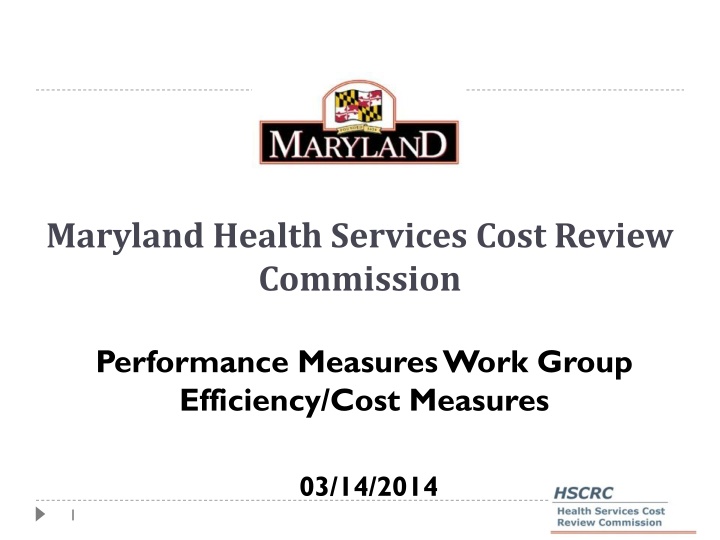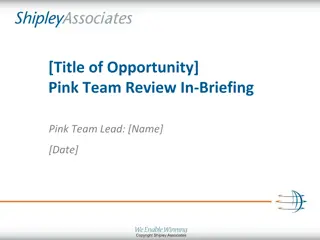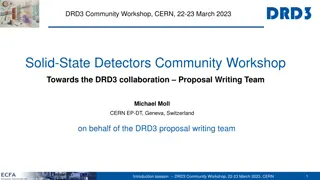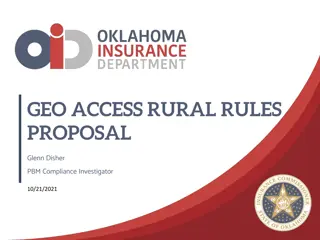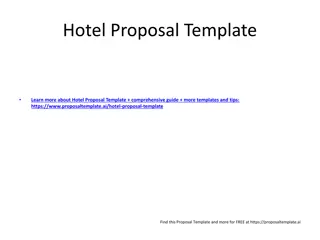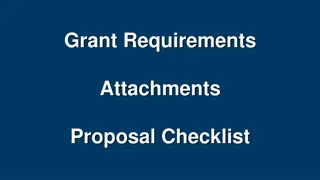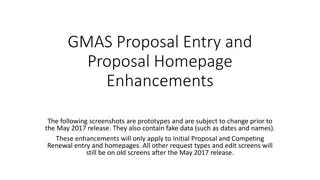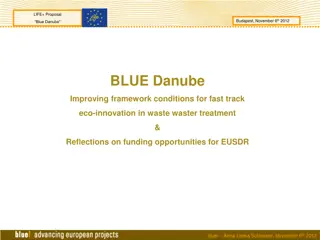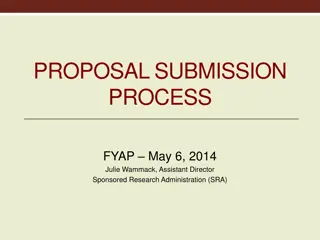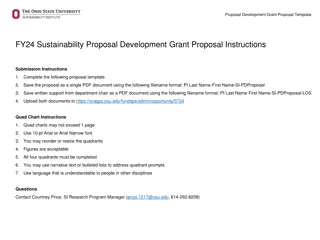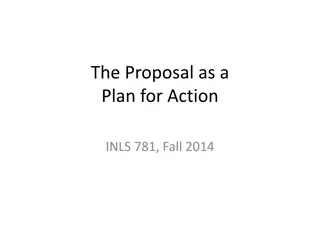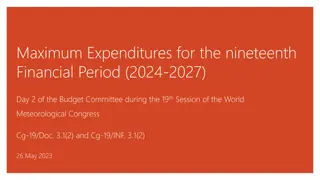GeoSmartCity Proposal Challenges and Opportunities
The GeoSmartCity proposal aims to demonstrate the economic value of making geo-data interoperable and reusable through open standards. With a focus on underground infrastructures and green energy, this project targets public authorities, utilities, small businesses, and citizens. Through 11 pilots across multiple regions, the project seeks to build partner capacity for sustainable outcomes that can be leveraged in various domains and geographical areas.
Download Presentation

Please find below an Image/Link to download the presentation.
The content on the website is provided AS IS for your information and personal use only. It may not be sold, licensed, or shared on other websites without obtaining consent from the author.If you encounter any issues during the download, it is possible that the publisher has removed the file from their server.
You are allowed to download the files provided on this website for personal or commercial use, subject to the condition that they are used lawfully. All files are the property of their respective owners.
The content on the website is provided AS IS for your information and personal use only. It may not be sold, licensed, or shared on other websites without obtaining consent from the author.
E N D
Presentation Transcript
http://broadneck.info/wp-content/uploads/2009/05/maryland_logo.jpghttp://broadneck.info/wp-content/uploads/2009/05/maryland_logo.jpg Maryland Health Services Cost Review Commission Performance Measures Work Group Efficiency/Cost Measures 03/14/2014 1
Conceptual Framework Value Patient Experience Cost Quality (Efficiency) 2
Possible uses of Efficiency measures Provide comparative information for decision making by businesses about health plan purchasing by consumers about health plan/provider choice by health plans about provider contracting by managers about resource allocation Monitoring and planning Pay-for-performance Public reporting 3
Review of Selected Cost Measures Per Case: Reasonableness of Charges (ROC) Episode: Medicare Spending per Beneficiary (MSPB) Population: Total Cost of Care PMPM measures 4
Reasonableness of Charges (ROC) HSCRC per case measure 5
HSCRC History of Efficiency Measures Converted into ROC in (1999) Screens First Efficiency Measure (1982) ROC converted into Blended ROC in (2010) The Commission has a long proven history of including some form of efficiency measure in its arsenal of tools used to set Maryland hospital rates. Once introduced these efficiency measures undergo many changes adapting to the industry environment. 6
ROC General Information Published each fall by HSCRC Hospitals are Stratified into Peer Groups. Current Peer Groups: Non- Urban Teaching Urban Suburban/Rural Non Teaching AMC Virtual Threshold for Reasonableness of charges Hospitals over 3.0% above their peer group average are identified by HSCRC as failing the ROC Hospital options after failing Reduce CPC to Peer Group Average over 2 years File full Rate Review Application (ICC) 7
ROC Adjustment Factors To compare hospitals with their peer group standards, approved CPCs or CCTs adjusted for the following: Mark-up Commission approved markups over costs that reflect uncompensated care built into each hospital s rate structure. Direct Strips (Direct Medical Education, Nurse Education, and Trauma) remove partial costs of resident salaries, nurse education costs and incremental costs of trauma services of hospitals with trauma centers Labor Market Adjustment for differing labor costs in various markets Case Mix Adjustment accounts for differences in average patient acuity across hospitals Indirect Medical Education- Adjustment for inefficiencies and unmeasured patient acuity associated with teaching programs. Disproportionate Share Adjustment for differences in hospital costs for treating relatively high number of poor and elderly patients Capital Costs for a hospital are partially recognized 8
Medicare Spending per Beneficiary (MSPB) 9
What is MSPB? MPSB is a ratio and calculated based upon a hospital s average spending compared to the national median 1 = Spending is approximately the same as the national median >1 = Spending is MORE than the national median <1 = Spending is LESS than the national median MPSB Episode includes all Part A and B claims between 3 days prior to index hospital admission to 30 days post hospital discharge Episode based on from date or admission dates for inpatient claim 10
Coverage of Episode Time Dimension Cost Dimension 3 Days Prior Home Health Hospice Outpatient Inpatient Skilled Nursing Facility Durable Medical Carrier Index Admission 30 Days After Hospital Discharge 11
Risk-Adjustment Variables Age Hierarchical Condition Categories (HCCs) Disability and End-Stage-Renal Disease (ESRD) Enrollment Status Long-Term Care Interactions between HCCs and/or enrollment status variables MS-DRG of Index Admission Reset (Winsorize) expected cost for extremely low-cost episodes 12
What is Total Cost of Care? The total cost of care is a measure of the total cost of treating a population in a given time period expressed as a risk adjusted per member per month (PMPM). PMPM with appropriate and comprehensive risk adjustment methods allows for fair comparisons between providers, insurers, and regions over time. 1 = Cost is approximately the same as the peer group or benchmark Standard >1 = Cost is MORE than the peer group or benchmark Standard <1 = Cost is LESS than the peer group or benchmark Standard 14
Coverage of Care Time Dimension Cost Dimension Inpatient, Outpatient, Professional, Pharmacy, Ancillary Services, Home Health, Hospice, Skilled Nursing Facility, Durable Medical Carrier Annual Quarterly Others 15
Considerations Measurement of Total Cost of Care Private Claims from Maryland Health Care Commission Medicaid Claims Medicare Claims Risk Adjustment Historical data on diagnosis Risk Adjustment Methodology Attribution Regional, county level calculations Hospital level 16
